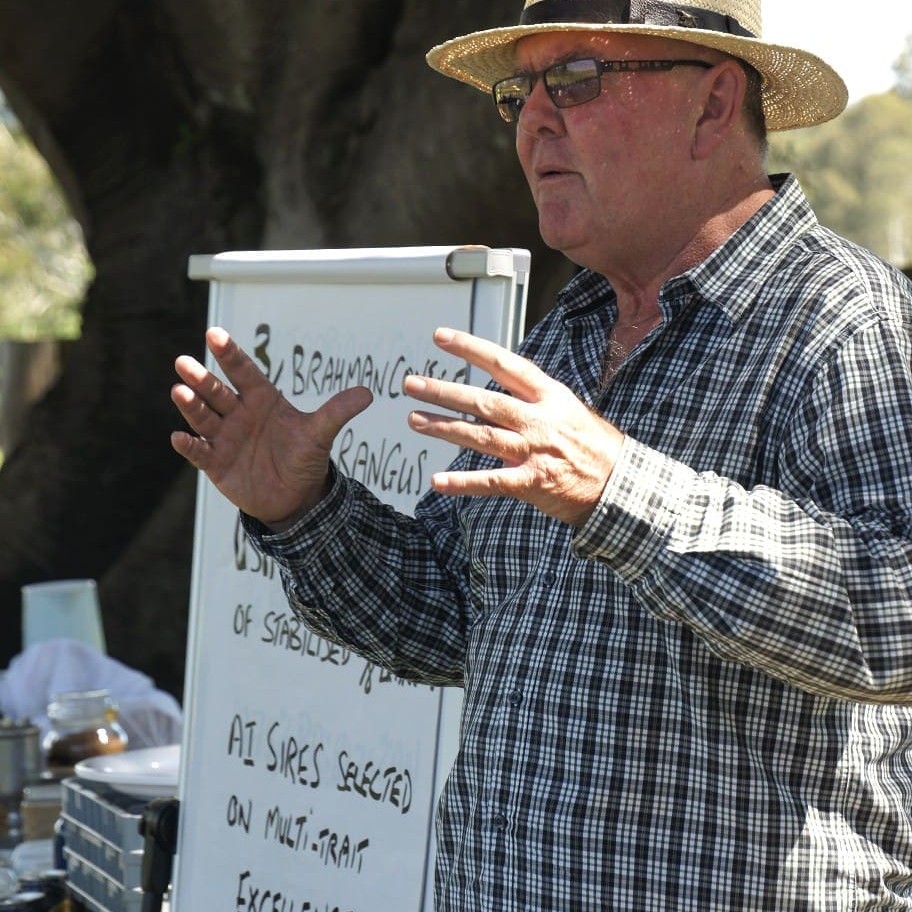 A newly-released report has highlighted Australia’s under-performance in the field of global export of beef cattle semen and embryos.
A newly-released report has highlighted Australia’s under-performance in the field of global export of beef cattle semen and embryos.
In fact Australia has little credibility as an exporting country in genetic material, importing up to fifteen times as much dairy and beef semen as it exports, and nearly three times as many embryos, the report found.
Report author, well-known cattle breeding and genetics consultant Don Nicol, said while Australia was the second-largest beef exporter in the world, enjoying the least-constrained market access conditions of any major producer, it was surprising to many that Australia was not also a major exporter of genetics.
His report, funded by the Australian Registered Cattle Breeders Association, Trade and Investment Queensland and the Queensland Department of Agriculture Fisheries and Forestry, suggests this was counterintuitive to many, when the natural and comparative animal health advantages that Australia has to offer are considered.
“In 2012, the US exported about $142 million worth of bovine semen around the world, while Canada, with half the cattle population of Australia, exported $88 million worth,” Mr Nicol said.
“In contrast, Australia for the same year generated probably no more than $1.5 million in export sales,” he said.
While Australia may be perceived as an ideal hub for dairy and beef genetics to enter Asia, little activity has occurred in that region, relative to other countries’ exports.
Mr Nicol’s report, “The Global Export of Bovine Semen and Embryos from Australia: How to Address the Current Market Failure,” outlines a number of reasons why Australia is underperforming in the field.
Factors included the relatively small size of the national dairy herd, and the low level of artificial insemination in the extensive beef industry, where one breed, Black Angus, dominated semen sales.
Another factor was that only a handful of international companies dominated Australia’s semen market, and there were no current Australian-owned artificial breeding companies with the scale and the staffing level to go offshore to develop markets and gain a significant place in the highly-competitive global genetics trade.
Mr Nicol suggested that if Australia wanted to improve its genetics exports, a critical first step would be a national meeting of all interested parties to map out a way forward.
“Failure to move in that direction will lead to continuation of the trend downwards for semen exports, stagnation of embryo export sales, and lost opportunities,” he said.
Such a meeting should also involve stakeholders involved in live export of breeding females, in order to develop a ‘Total Genetics Exports’ approach.
A national meeting is planned to take place in Brisbane in September or October, to try and address some of the issues raised, including:
- Why Australia has not become a net exporter of genetic material;
- Whether some of the levies paid by exporters should be spent on the promotion of Australian beef and dairy genetics for export;
- Whether Federal and State Governments should be encouraged to commit to increased funding for overseas trade promotion involving genetics; and
- An increase of resourcing to DAFF for negotiation of health protocols and export processing.
In both the US and Canada, the two largest global exporting countries, there had been a strong history of Government funding and support for the genetics trade, especially in the form of overseas trade promotion and market development, Mr Nicol said.
“Unlike our major competitors, there has been virtually no Australian Federal or State government support for exporters, or for export market development,” he said.
Mr Nicol suggested South America should become a major target for exports of Australian beef cattle semen and embryos.
“Companies and individual stud breeders have tried hard to export Australian beef semen to South America and have had some success, but exports are not growing year on year and competition from within South America is growing.”
“South America, particularly Brazil, offers potential for tropical beef breed sales however attention to documented genetic merit of individual donors is important and price will be an issue with semen.”
The lack of resourcing for the departments previously known as AQIS and Biosecurity Australia, now DAFF, had become a major issue, Mr Nicol said.
“There are now major constraints in terms of staff recruitment, retention and availability. There are a number of veterinary protocols that require concentrated, targeted and specific input from qualified staff in order to become finalised but generally, the staff at DAFF are fully-utilised in crisis management for live exports. Genetic exports work gets postponed and seldom prioritised,” he said.
The proposed Brisbane meeting will involve state and federal government, industry and breed associations, stud breeders interested in exports, embryo transfer practitioners and artificial breeding companies.



HAVE YOUR SAY